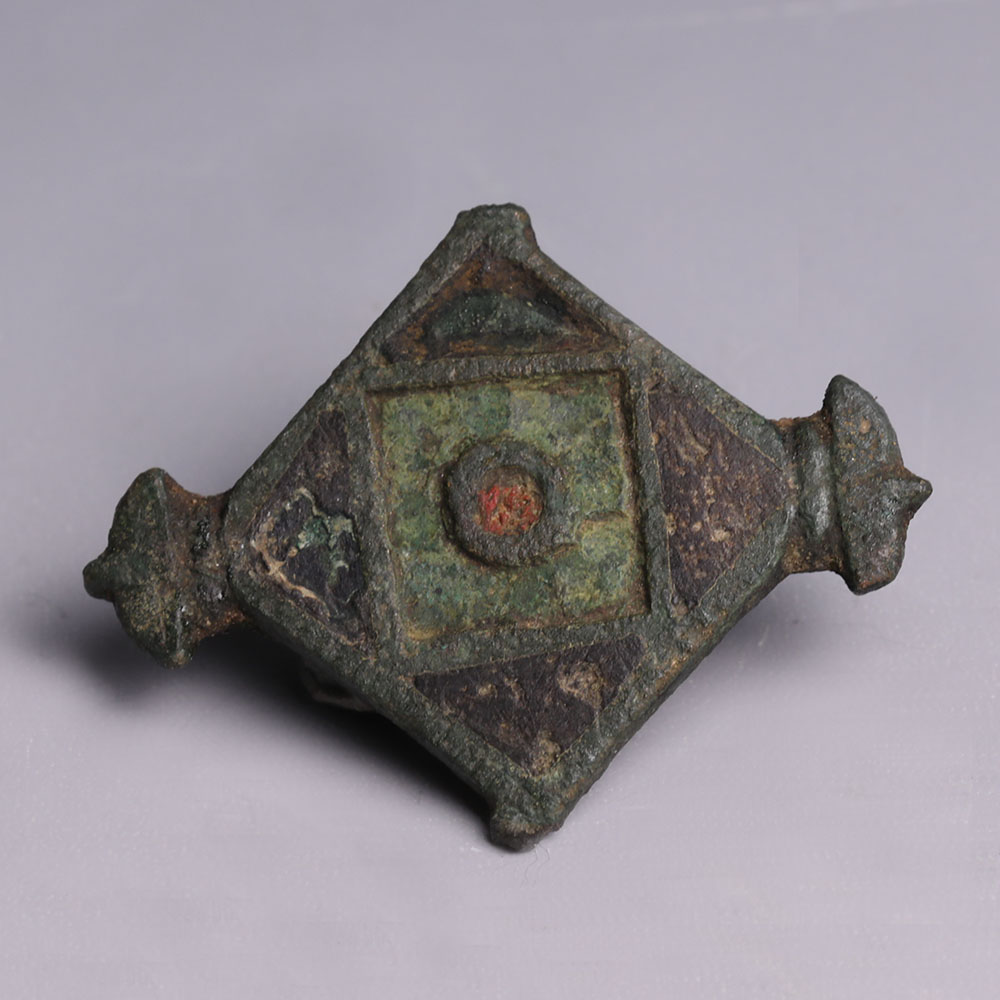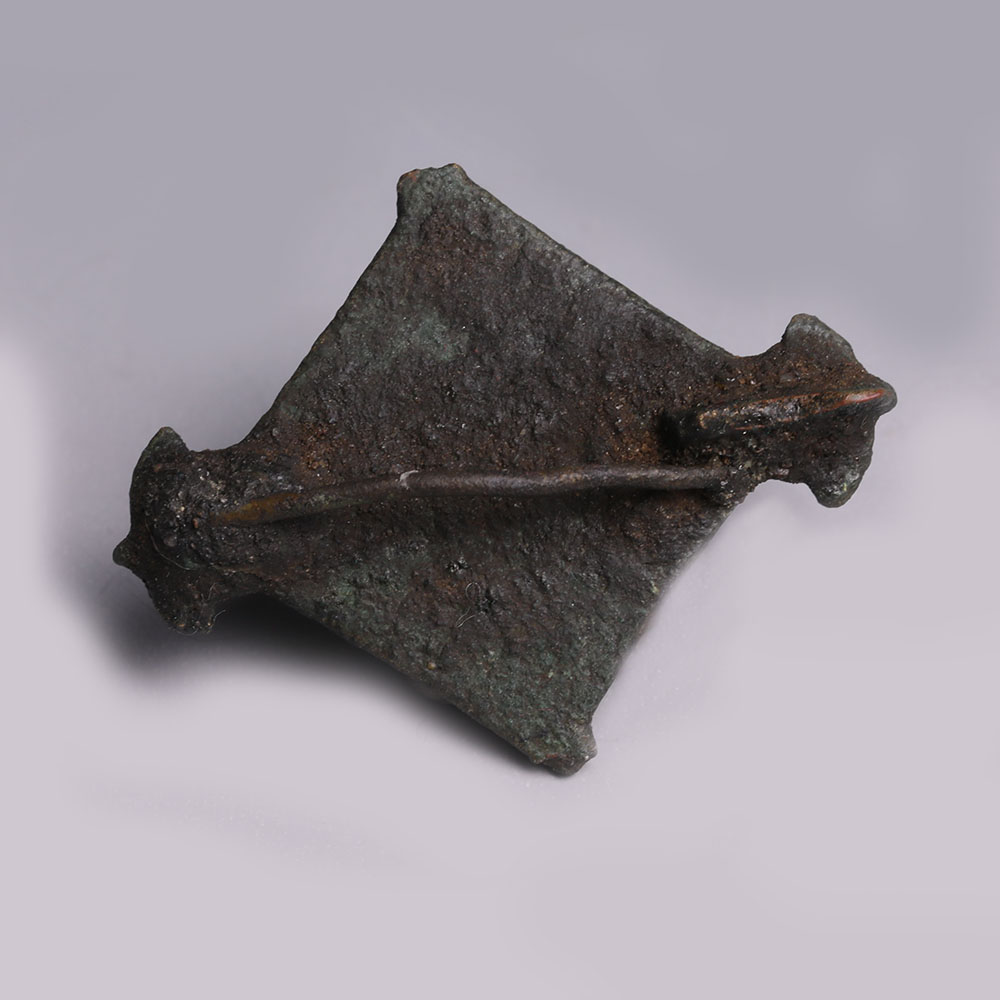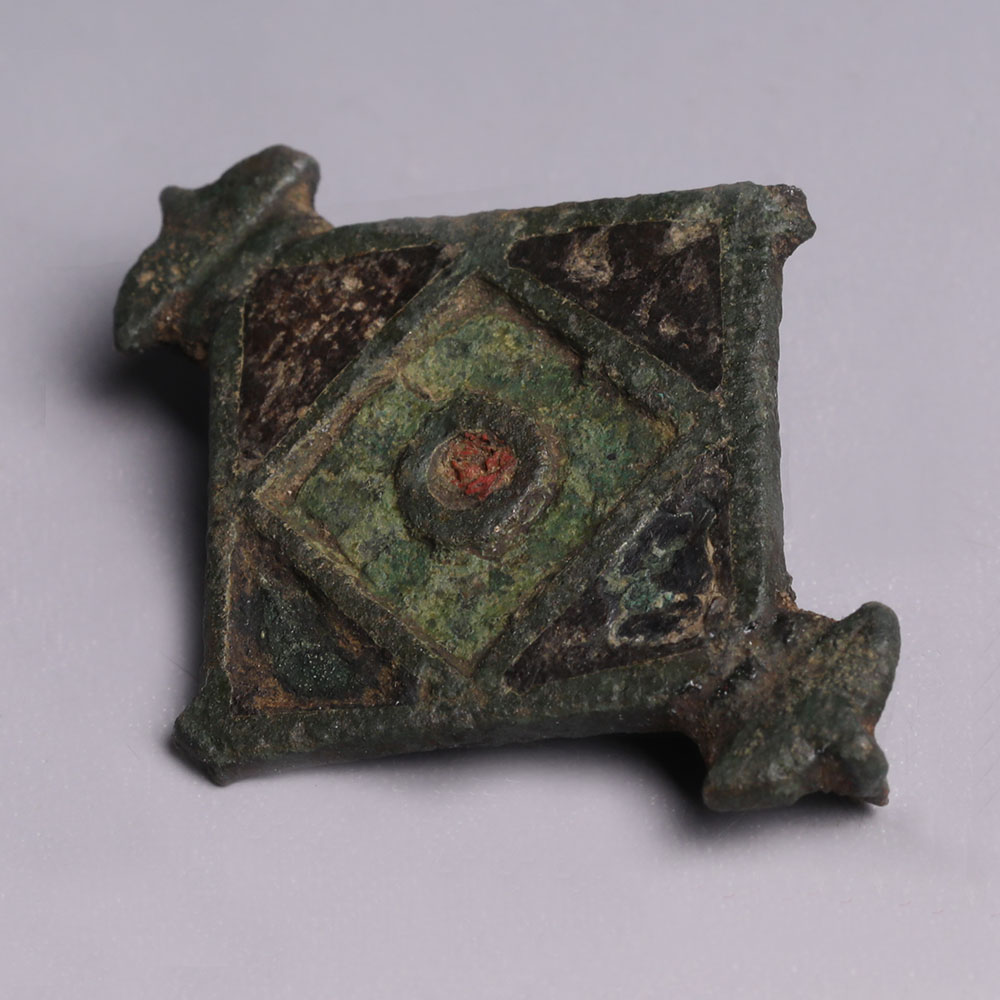Fibulae or brooches were originally used in Ancient Greece and in the Roman Empire for fastening garments, such as cloaks or togae. The fibula designs developed into a variety of shapes, but all were based on the safety-pin principle. The Roman conquests resulted in a spread of Roman culture and therefore the use of the fibula, which became the basis for more complicated and highly decorated brooches, modelled in bronze, silver and gold and further enriched with precious and semi-precious gemstones. Fibulae are the most common artefact-type in burials and settlements throughout much of continental Europe. By the Middle Ages, the Roman safety pin type of fibula had fallen into disuse.
This lozenge-shaped plate brooch was a precursor to the disc-style brooches and was in use from the late 1st century BC to the mid-1st century AD. Their name, as it suggests, categorises them as non bow brooches and they existed in a variety of shapes included lozenge, piriform and lunular.


